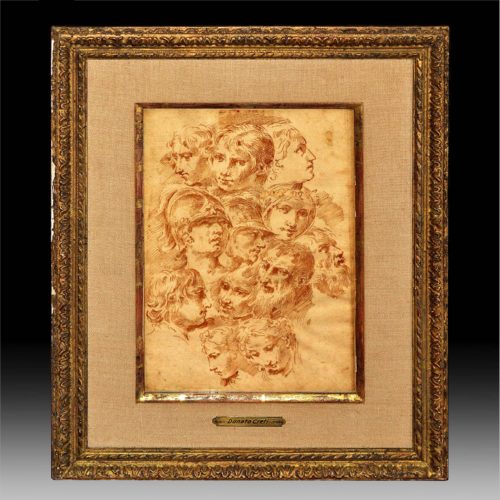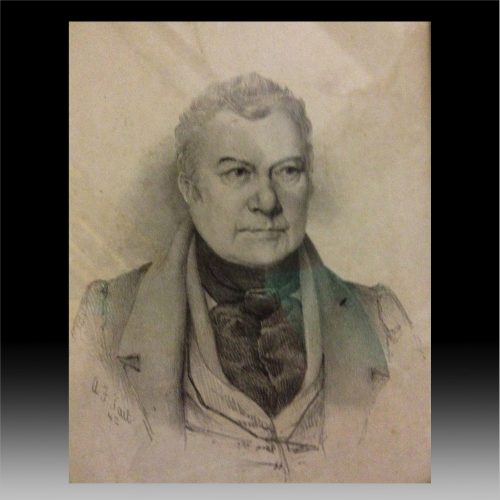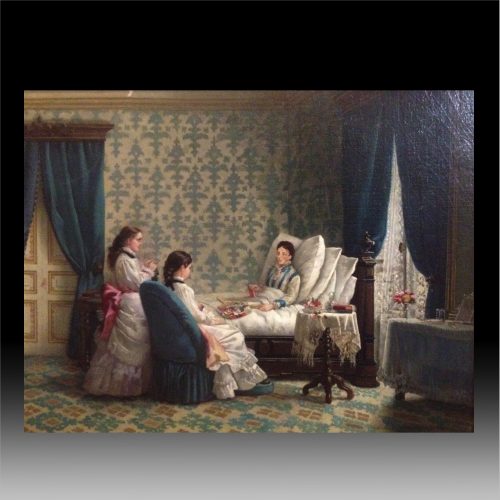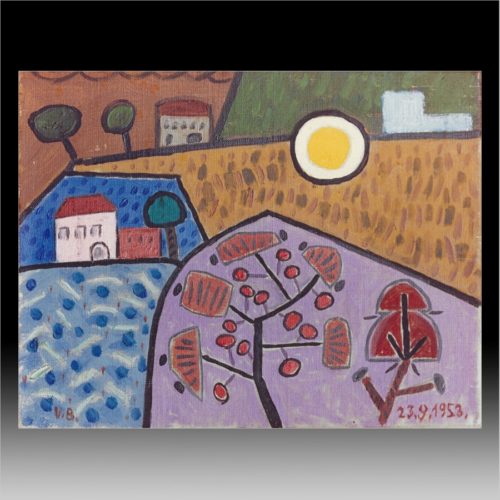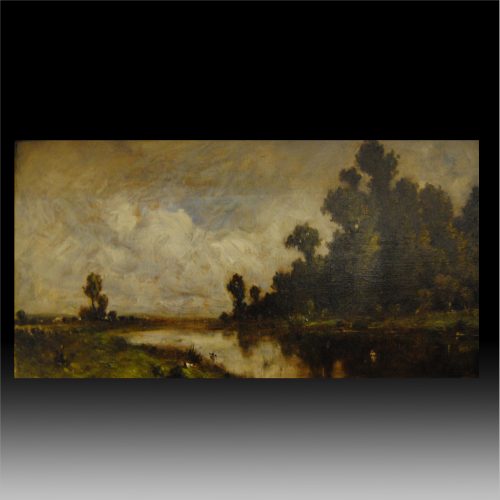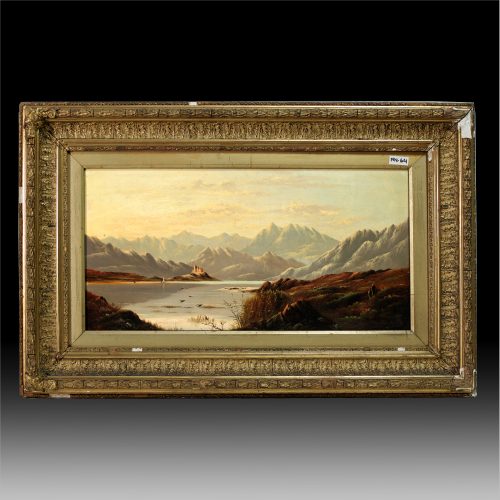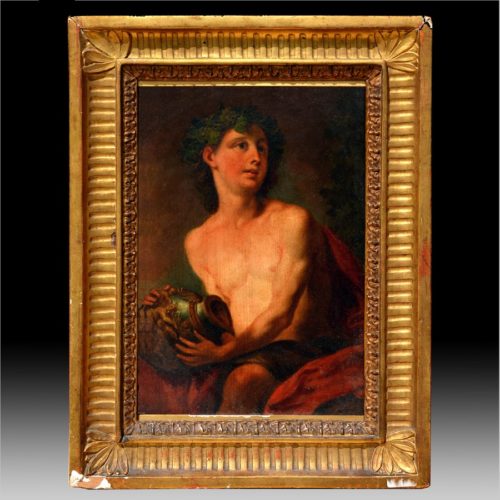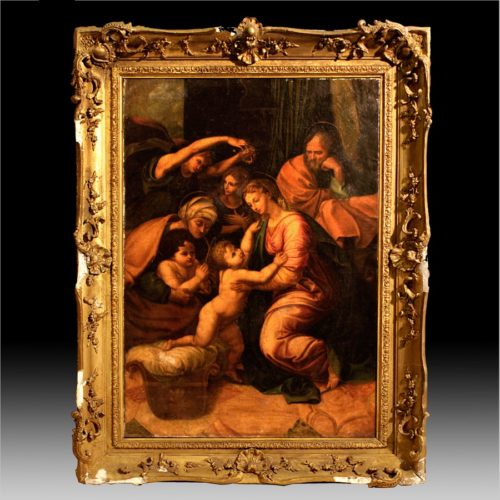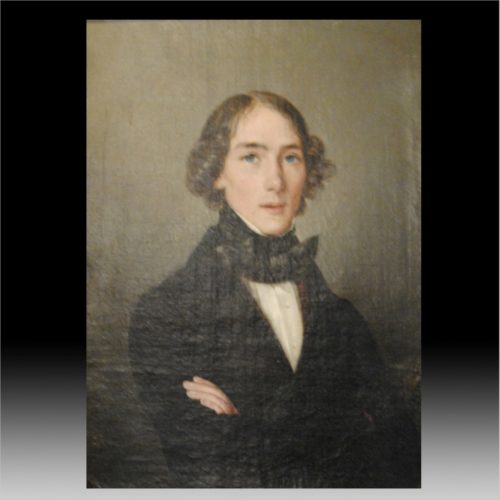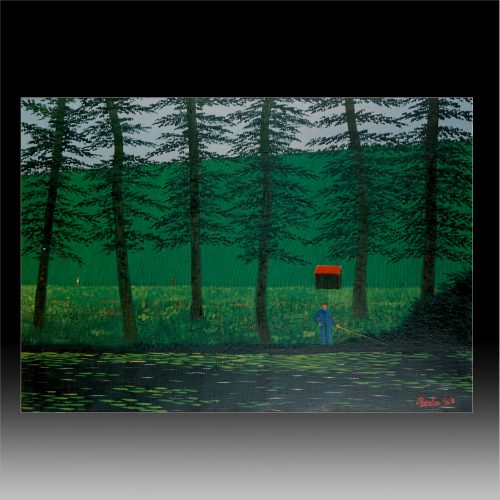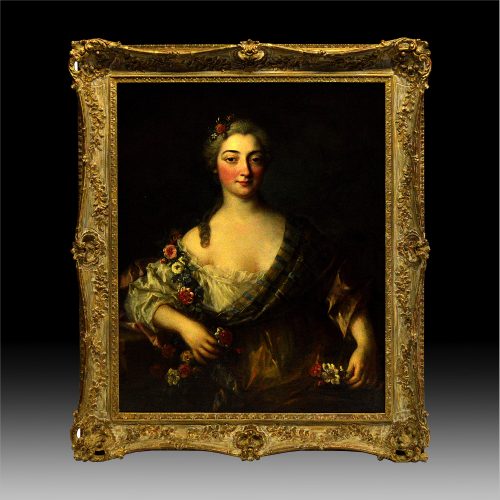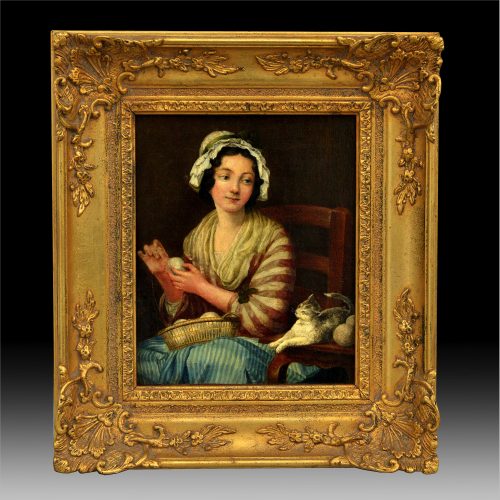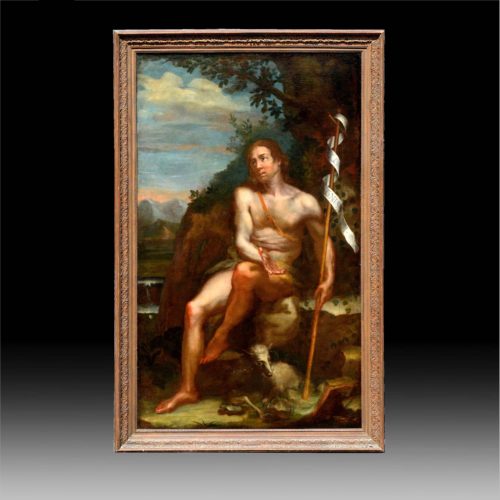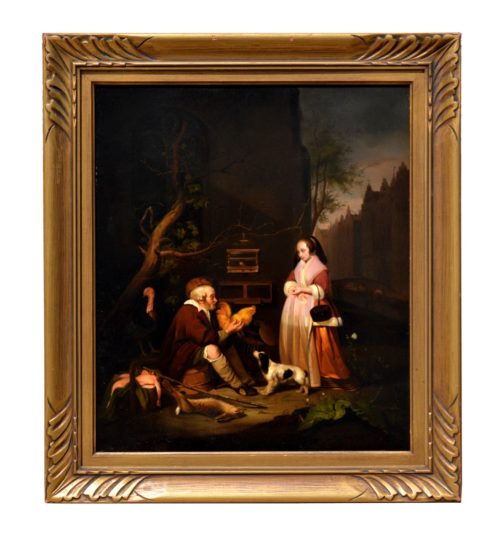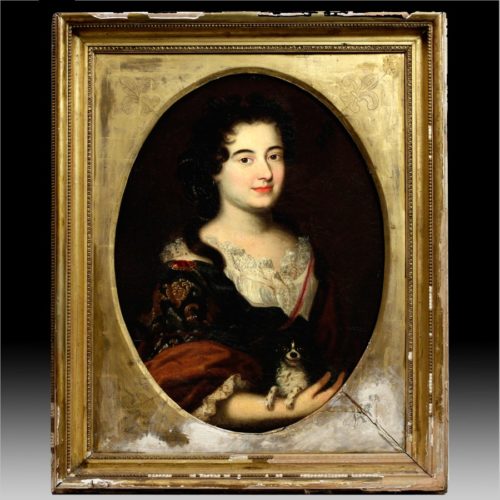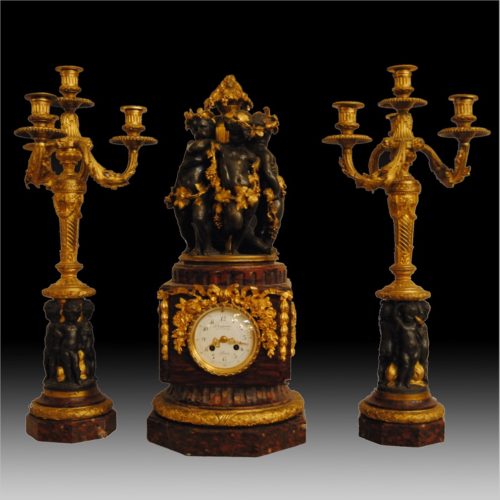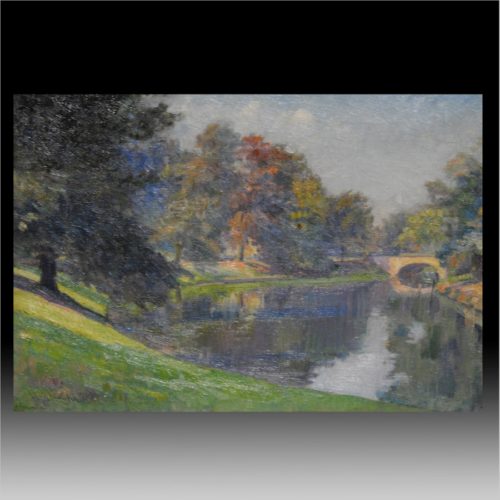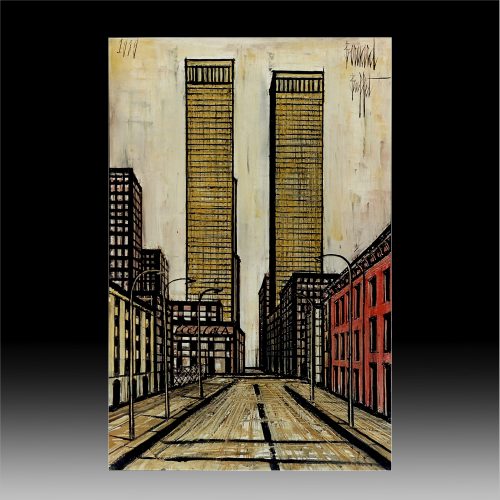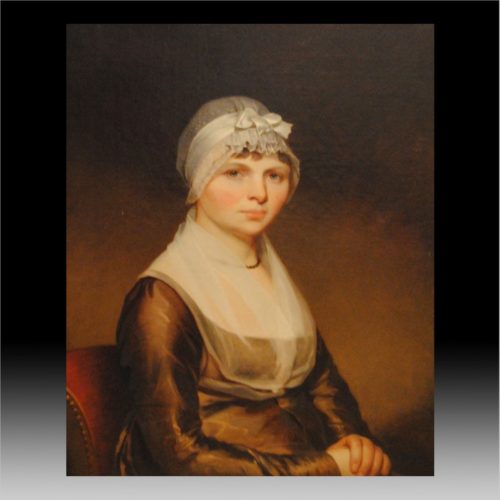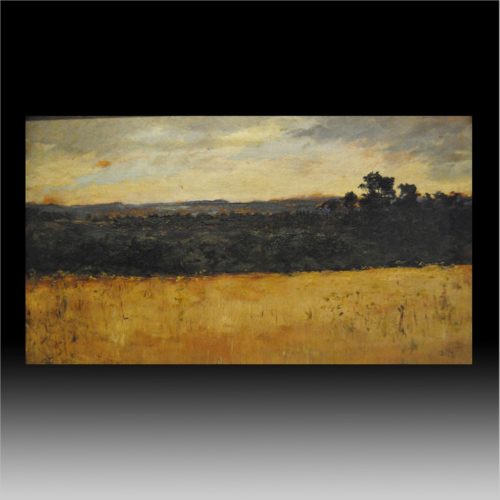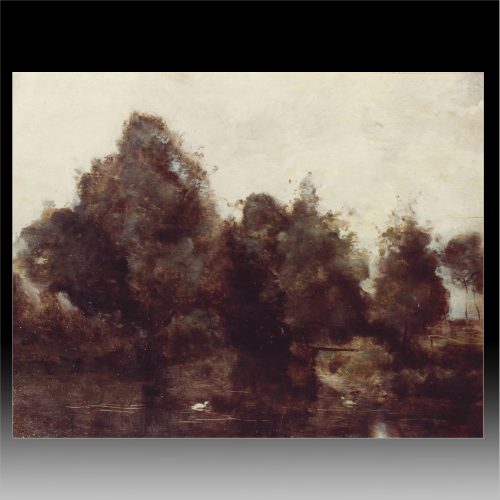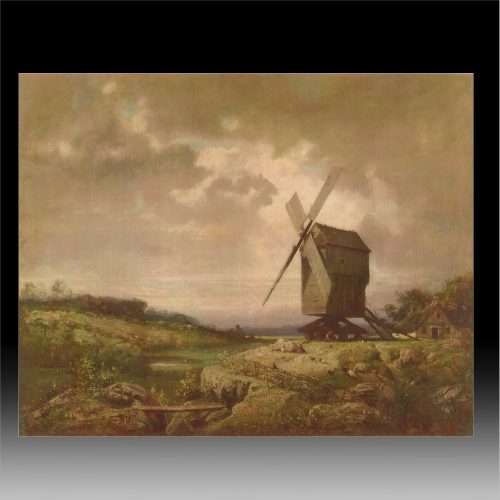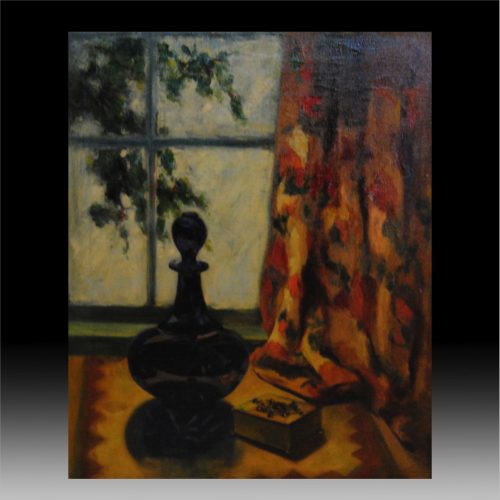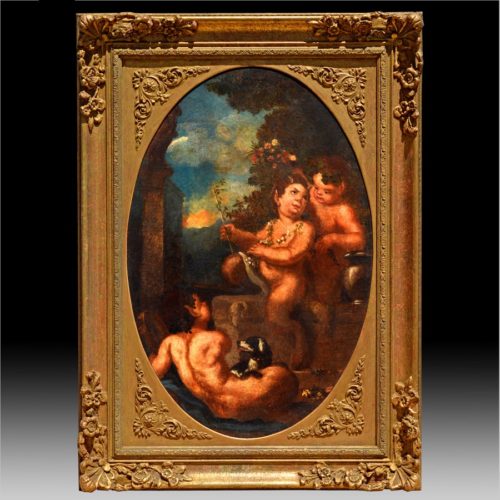-
Donato Creti “Studies of Heads” Pen and brown ink on paper 10 ¾ x 7 ¼ inches @NB-1040 #26 Donato Creti (24 February 1671 – 31 January 1749) was an Italian painter of the Rococo period, active mostly in Bologna. Born in Cremona, he moved to Bologna, where he was a pupil of Lorenzo Pasinelli. He is described by Wittkower as the "Bolognese Marco Benefial", in that his style was less decorative and edged into a more formal neoclassical style. It is an academicized grand style, that crystallizes into a manneristic neoclassicism, with crisp and frigid modeling of the figures. Among his followers were Aureliano Milani, Francesco Monti, and Ercole Graziani the Younger. Two other pupils were Domenico Maria Fratta and Giuseppe Peroni.
-
Arthur Fitzwilliam Tait 1819-1905 “Tait’s father” 5 ¼” x 7” Pencil on paper Provenance: Alan R. Tait 08/10/77 Worth 1,000 @AC-NB
-
Edwin Howland Blashfield Women Aiding the Less Fortunate 1848-1936 21 ¾” x 17” AC80000 @AC-NB
-
Victor Brauner (Rumanian, 1903-1966) “Paysage” Oil on Canvas 7 ½”x 9” Signed bottom left Dated 1953 COA by S. Kinge PROVENANCE: Alexander Iolas, NY Exhibited: New York, Bodley Gallery, Victor Brauner,1961
-
French School (19th/20th Century) Lush Landscape Surrounding a Lake. Indistinctly signed lower left Oil on panel. 7 ¼x 14 in. (18.5 x 35.5 cm)
-
Charles Robert Leslie (English, 1794-1859) Landscape Oil on canvas 12 x 24 in.
-
Giovanni Antonio Pellegrini (Italian, 1675-1741) “The Young Bacchus” Oil on panel 11 x 7 ½ inches (27.9 x 19.2 cm) Giovanni Antonio Pellegrini (29 April 1675 – 2 November 1741) was one of the leading Venetian history painters of the early 18th century. His style melded the Renaissance style of Paolo Veronese with the Baroque of Pietro da Cortona and Luca Giordano. He travelled widely on commissions which brought him to England, the Southern Netherlands, the Dutch Republic, Germany, Austria and France. He is considered an important predecessor of Giovanni Battista Tiepolo. One of his pupils was Antonio Visentini. Pellegrini was a pupil of the Milanese painter Paolo Pagani. He travelled with his master to Moravia and Vienna in 1690 and was back in Venice in 1696 where he painted his first surviving works.
-
Raphael (Raphael Sanzio da Urbino)(Italian, 1483-1520) “HeligaFamiljen” Oil on canvas 48.4 x 36.6 inches CL102794-32 351002-2 @AL 7/13
-
Dunlavy Portrait Former Property of Great Grandson of A. Lincoln Oil on canvas 9 ½ x 13 inches @AC-NB
-
Camille Bombois (French, 1883-1970) “Le pecheur aux grands arbres” Oil on canvas 25 ½”x 36 ¼” Signed bottom right COA by D. Vierny PROVENANCE: Dr.Franz Meyer-Mahler, Zurich Perls Galleries, NY EXHIBITED: Basel, Kunsthalle, June-Aug. 1995 #62
-
Follower of Jean Marc Nattier (French, 1685-1766) ‘Portrait of a Woman, said to be Madame Le Normant D’Etoiles’ Oil on canvas 32 x 25 ½ in. (81.3 x 64.8 cm)
-
Unknown Artist 19th Century “Girl with Yarn” 10 x 8 ½ in.
-
Gabriel Metsu ‘The Game Seller’ oil on panel 19 x 16 in. (48.3 x 40.7 cm) CL102794-239 654401-2 @AC-NB
-
Henri Gascars ‘Portrait of a Lady, half length in a blue Dress with a white Chemise and a brown Wrap, holding a Spaniel' Bears inscription on a label on the reverse ‘Mrs. Cunliffe' oil on canvas, in a painted oval 27 x 19 ½ in. 68.6 x 49.5 cm. Henri Gascar (1635 – 1 Jan 1701) (also Gascard, Gascars) was a French-born portrait painter who achieved artistic success in England during the reign of Charles II. He painted many leading ladies at court, including several of the King's mistresses, before returning to Paris. He subsequently relocated to Rome, where he died in 1701. Gascar came to England about 1674, probably at the behest of Louise de Keroualle, Duchess of Portsmouth, Charles II's favourite mistress. Gascar (or Gascard, as he seems to have spelt his name at first) was already known as a skillful portrait-painter; among the portraits already painted by him was that of Nicolas de Lafond, author of the "Gazette of Holland", painted in 1667, and engraved by Peter Lombart. The patronage of the Duchess of Portsmouth ensured Gascar a rapid success in England. His flamboyant style, contrasting with the stolid English approach, seemed to suit the frivolity of the time and he painted many of the ladies of Charles II's court. His lack of attention to detail in the likeness he made up for by the sumptuous draperies and tawdry adornments around the subject. For a short time he became fashionable, and is said to have amassed a fortune of over £10,000.
-
A Bronze and Mahogany Clock Set with Three-Light Candelabra. Clock Dimensions: Height: 24 inches Width: 10 ½ inches Depth: 10 ½ inches Candelabra Dimensions: Height:24 ½ inches Width: 10 ½ inches Y&D MAYER AUG2902 AC40000 F-1145
-
Hippolyte Petitjean (French, 1854-1929) “Le bois de bruxellex” Oil on canvas 15” x 21 5/8” Signed lower left PROVENANCE: Hammer Galleries New York
-
Bernard Buffet (French, 1928-1999) “World Trade Center” Oil on canvas 38” x 57” Signed and dated 1989 upper right and left
-
(Charles) Chester Harding 1792-1866 “Portrait of Ann McChait” Oil on canvas 29” x 24” AC7200 AC12000 @AC-NB
-
Elizabeth M. Yates b. 1883, Landscape Scene Oil on wood 9 ¼” x 5 ½” @NB
-
Jean Baptiste Camile Corot (French, 1796-1875) “Environs d’Arras- Bords de la Scarpe” Oil on panel 12 ½”x 16” Vente stamp on the reverse Painted in 1860-65 COA by M. Dieterle «I'Oeuvre de Corot», 1965, vol.III, pp. 124-125 no.1592 PROVENANCE: The Artist's Studio; sale, Hotel Drouot, Paris May 26-28 1875,#125
-
Charles Felix Edouard Deshayes (French, 1831-1895) Windmill Near Paris Signed and dated ‘Ch Deshayes 1874 Paris’ Oil on canvas 26x 32 in. (66 x 81.2 cm)
-
Henry Lee McFee ‘Still Life with Bottle’ Oil on canvas 24 x 20 inches
-
Pier Francesco Mola (Italian, 1612-1666) “Infant Satyrs Playing by a Plynth” Oil on canvas 24 x 16 inches (60.9 x 40.7 cm) CL102794-136 540802-2 @NB-1040 Tagged

